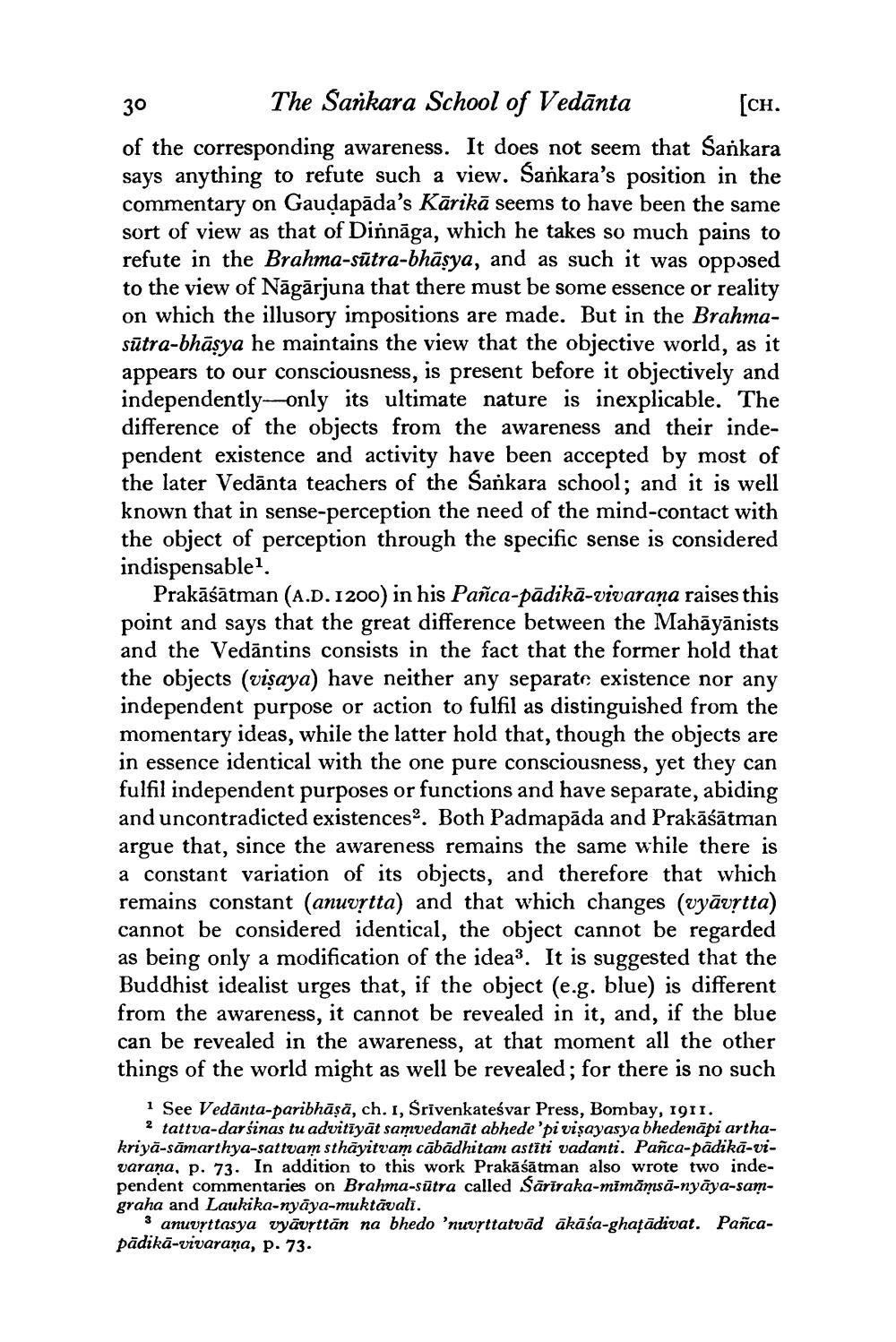________________
30
The Sankara School of Vedānta [CH. of the corresponding awareness. It does not seem that Sankara says anything to refute such a view. Sankara's position in the commentary on Gaudapāda's Kārikā seems to have been the same sort of view as that of Dinnāga, which he takes so much pains to refute in the Brahma-sūtra-bhāsya, and as such it was opposed to the view of Nāgārjuna that there must be some essence or reality on which the illusory impositions are made. But in the Brahmasūtra-bhāsya he maintains the view that the objective world, as it appears to our consciousness, is present before it objectively and independently-only its ultimate nature is inexplicable. The difference of the objects from the awareness and their independent existence and activity have been accepted by most of the later Vedānta teachers of the Sankara school; and it is well known that in sense-perception the need of the mind-contact with the object of perception through the specific sense is considered indispensable
Prakāśātman (A.D. 1200) in his Pañca-pădikā-vivarana raises this point and says that the great difference between the Mahāyānists and the Vedāntins consists in the fact that the former hold that the objects (vişaya) have neither any separate existence nor any independent purpose or action to fulfil as distinguished from the momentary ideas, while the latter hold that, though the objects are in essence identical with the one pure consciousness, yet they can fulfil independent purposes or functions and have separate, abiding and uncontradicted existences?. Both Padmapāda and Prakāśātman argue that, since the awareness remains the same while there is a constant variation of its objects, and therefore that which remains constant (anuvítta) and that which changes (vyāvítta) cannot be considered identical, the object cannot be regarded as being only a modification of the idea3. It is suggested that the Buddhist idealist urges that, if the object (e.g. blue) is different from the awareness, it cannot be revealed in it, and, if the blue can be revealed in the awareness, at that moment all the other things of the world might as well be revealed; for there is no such
1 See Vedānta-paribhāṣā, ch. 1, Srivenkateśvar Press, Bombay, 1911.
2 tattva-darsinas tu advitīyāt samvedanāt abhede 'pi visayasya bhedenāpi arthakriya-samarthya-sattvam sthāyitvam cābādhitam astīti vadanti. Pañca-pădikā-vivarana, p. 73. In addition to this work Prakāśātman also wrote two independent commentaries on Brahma-sūtra called Sārīraka-mīmāmsā-nyāya-samgraha and Laukika-nyaya-muktavali.
3 anuorttasya vyāvrttan na bhedo 'nuvịttatvād ākāśa-ghațādivat. Pañcapādikā-vivarana, p. 73.




